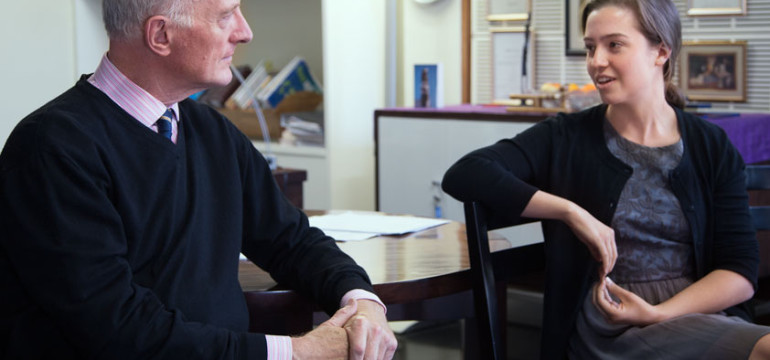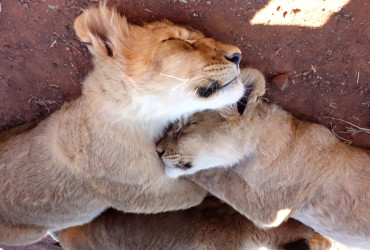We started the day at the Constitutional Court of South Africa. We were fortunate enough to watch a short proceeding take place and then were given a tour by Nate Freeman, a clerk for Justice Edwin Cameron and a Yale-alum. The Constitutional Court itself is incredibly beautiful and well-designed. Housed within the remains of the Old Fort Prison, the building is meant to not only reflect the tumultuous history of South Africa, but to create an open, collaborative environment welcome to all people and perspectives, reflecting the openness of the post-apartheid Constitution. Rather than using the traditional symbol of justice (a woman, blind-folded, holding scales) this Court’s symbol was of a tree. The symbol echoes the idea of collaboration and unity, as the tree is meant to signify the meeting place of the elders of different tribes. While the entire tour was spectacular, the highlight was the opportunity to meet Justice Edwin Cameron. He welcomed us into his office and answered all of our questions about the post-apartheid justice system and how different stigmas associated with TB and HIV currently affect communities throughout South Africa.
Then we went to Nandos. It was spicy. Their garlic bread survey was… less than legit. But the garlic bread made up for it.
We spent the afternoon at the Apartheid Museum. It’s amazing how little I knew about apartheid when I arrived. Of course I’d heard of it and many South Africans mention the effects of apartheid regularly and almost casually in conversation. But until I spent three hours sifting through the extraordinarily complex history of South Africa, from the discovery of gold in J-burg and subsequent European colonization to Mandela’s presidency *after 27 years in imprisonment and the modern day efforts to absolve residual tensions, I had no idea. (*In the museum, replicas of the solitary confinement prison cells really struck home for me. Spending only a couple of moments in the small, cold, hard spaces was anxiety-producing. I cannot imagine the pain of 27 years imprisoned, and I am in awe of the will, determination and faith of those who were able to withstand such imprisonment.) I was particularly struck by how vital the youth movements were in the dissolution of apartheid. Essentially, the youth of South Africa made the country impossible to govern. Thus chaos overturned the oppressive regime. Watching footage of people my age and younger fight for basic human rights was particularly moving. Not only did it spark an immense feeling of gratefulness for the basic human rights I so often take for granted, but it made me reconsider what my role as a global citizen is and how I can help those currently fighting for equality. There is much work to be done. “A luta continua.”
For a pre-dinner snack, we all ate chips at a fast station. But these were not any old chips. Oh no. South Africa has some pretty far-out chip flavors. Delicious.
Our last stop for the day was the Wits Art Museum where we watched part of an opera about miners throughout South Africa. The opera is currently in development, but I think that it has the potential to be something very ground-breaking. I’m all about putting new voices and stories on stage. This performance is striving to do just that, bringing awareness to the dire working conditions of many mining communities. It was also a unique opportunity to see part of the arts community in Johannesburg. A few of us were talking to a woman who was a theater journalist and archivist at the Wits. She explained to us that though South Africa had made significant progress, censorship, particularly in the arts, was still prevalent. Interestingly, apartheid yielded an upsurge in arts organizations and creative collaboration. Many of the performances and works of art at this time were reactions against apartheid. But with the dissolution of apartheid, a number of South African artists left the country and, due to this exodus, the arts community is still in the process of rebuilding itself. Based off of the swarms of people who attended last night’s performance, I’d say the arts community is well on its way…
All-in-all, it was a truly incredible day.




Leave a Reply